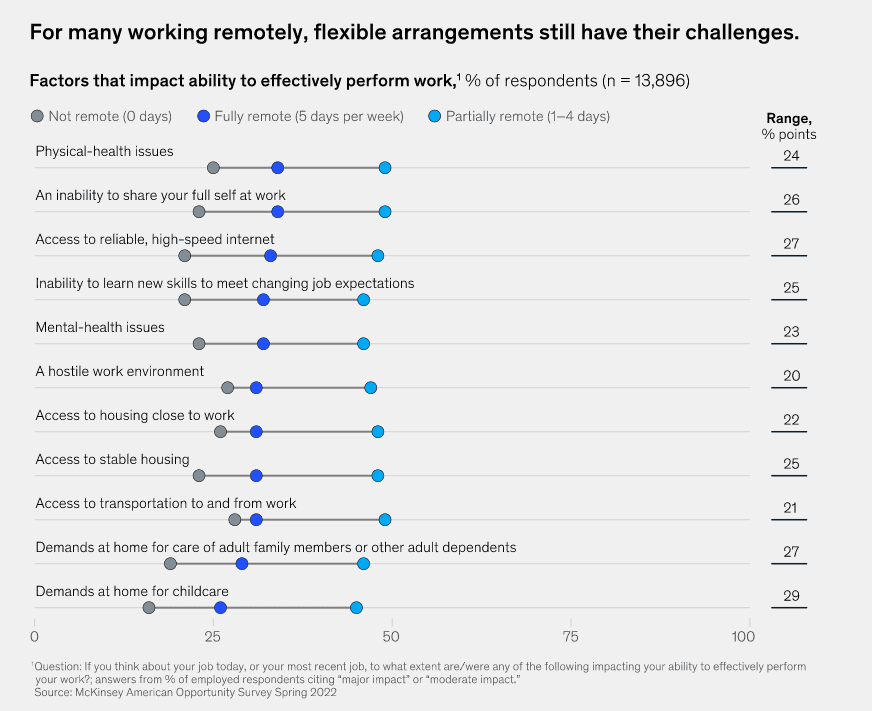McKinsey: 87% of US workers seize remote work opportunities
Employees are also prepared to quit their jobs for more flexibility on when and where they work.
Why You Should Care
US employees are keen to work from home.
But they are still facing challenges, particularly around productivity and missing out on what's happening in the office.
What must employers do to rectify the situation?
Declaring that COVID-19 changed the world of work forever is a very grand, broad statement, but it has been proven by McKinsey’s American Opportunities Survey.
The research, which profiled 25,000 workers in the US, found that 58% had the opportunity to work from home at least one day a week. When this data is extrapolated to the entire US population – that equals 92 million people working from home at least some of the time.
The study found that 35% (or 55 million) are able to work from home five days a week, 23% (or 36 million) are allowed to work remotely part-time and 41% (or 66 million) had no choice.
Interestingly, employees are seizing the opportunities to work flexibly. 87% told McKinsey this was the case, and they worked at home an average of three days a week.
Beyond this, 12% of those who are not offered full-time remote work are actually working from home five days a week.
This proves just how important flexible work is to employees – in fact, 21% said flexible working and 15% said predictable hours were major motivators for them to look for a new job.
They were beaten to the top spot by better career development opportunities (27%) and better pay (27%).
Importantly, McKinsey found that people with certain job types were particularly keen on remote work – the top two were computer and math workers, and business and financial operations.
This should be a wake-up call for large banks, like JP Morgan, Goldman Sachs, and Morgan Stanley, who have largely been anti-remote working – clearly, you are out of touch with your workers’ desires.
The downsides of remote work
While employees are keen to work from home, this doesn’t mean it is a panacea.
McKinsey’s research found that employees were struggling with their physical and mental wellbeing, as well as learning new skills while working remotely.
They also had issues around productivity, particularly if split their time between the office and home.
McKinsey suggested: “It could…be that workers who experience both on-site and at-home work are exposed to the challenges of each and the costs of regularly switching contexts.”

Rather than just stopping people from working home, employers need to be cognizant that different groups perceive and experience remote work differently and consider how flexible working fits with their diversity, equity, and inclusion strategies.
On the topic of diversity and inclusion, one concerning finding of the research was despite women working from home more than men (3.1 vs 2.9 days a week), female employees are being offered fewer remote work opportunities. 61% of men surveyed were able to work from home, compared to 52% of women.
In addition, trans employees are working from home 3.7 days on average, but just 32% of them have been formally offered opportunities for flexible working.
This may suggest that female and trans workers are more likely to work in companies where the default is office-based work.
But because they are opting to work from home, they are likely to be overlooked for promotions or pay rises. Proximity bias is real, and it is a genuine threat that employers need to be aware of.
Technology can help make workplaces more inclusive of workers no matter the location they are in. But be careful not to overcompensate, and over-rely on video meetings for everything, according to McKinsey.
Sign up to the UNLEASH Newsletter
Get the Editor’s picks of the week delivered straight to your inbox!

Chief Reporter
Allie is an award-winning business journalist and can be reached at alexandra@unleash.ai.
